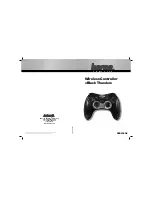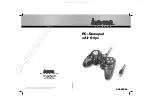
RC-1170/1270 Redundancy Switch Controllers
Revision 0
Front Panel Operation
3–14
MN-RC-1170/1270
3.4
Calibration
After the unit is installed and properly cabled, a calibration check must be performed. The
calibration push-button is located on the left side of the rear panel.
Calibration Requirement
The calibration of the unit becomes necessary because the controller can operate with LNA/LNB
currents from 65 to 600 mA.
During the calibration process, an electronic potentiometer will scale the current reading to the
center of the error window. The potentiometer setting is stored in EEPROM and is recalled upon
power-up.
Three requirements are necessary to initiate a calibration:
•
LNAs intended for service are connected correctly.
•
Controller is in local mode.
•
Unit is in manual mode.
•
There is a separate calibration point for each unit and each bias voltage (i.e. each unit
will have a calibration point for 13 V operation and one for 18 V). The quickest way to set
all calibration points is with the rear panel switches.
•
Connect the system and confirm the LNA/Bs are operating correctly.
•
Set the rear panel bias voltage switch to “High” and press the momentary “Cal” button.
•
Repeat the calibration process with the bias switch on the Low setting.
•
Set the bias switch to the center “SW” setting.
If the LNA/LNB current deviates from the initial value by approximately ± 30% (as set by user), a
fault will occur.
It is important to calibrate the system only upon initial installation. If the
calibration is performed as part of routine maintenance, the upward or
downward drift of the current will be constantly adjusted.
Calibration Failure
Upon pressing the calibration push-button, the electronic potentiometer will move up or down to
center itself in the error window. Should the LNA/LNB
current be ≤ 65 mA or ≥ than 600 mA, the
circuit will be unable to center itself. The fault LED will be on for the respective LNA/LNB.
3.5
Internal Adjustments and Switches
Power Supply Voltage
This parameter is set at the factory.
















































